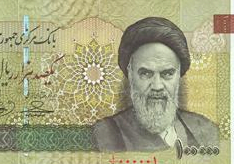(Kabul, Afghanistan) The USA and EU sanctions on the Iranian economy, which have taken a hard toll on common Iranians, have also adversely affected Afghans – both the refugee community in Iran and families in Afghanistan dependent on income from their breadwinners working in the Islamic republic next door.
The value of the Iranian rial in world markets has fallen to record lows several times over the past year, some of the most recent being September 29 and October 1. Each time the rial falls, the savings or wages of workers in Iran also take a hit.
The US electorate, itself hard hit by the economic downturn, reelected President Obama, who has imposed some the harshest American sanctions ever on Iran. His administration has also worked to get the EU to impose sanctions on Iran and has been tough on countries that have sought to skirt them. President Obama is likely to continue the sanctions as he seeks to assuage the hawks and their intensifying war rhetoric amid continued concerns over Iran’s nuclear program.
Many of the two million Afghans in Iran have lived there for much or all of their lives and through the decades of war at home, working mostly low-wage jobs that are generally considered too low or difficult for others to perform. Most of these refugees largely live sustenance-only lives, but the few who have built savings have lost a considerable chunk of their hard-earned wealth due to the rial’s devaluation.
The families in Afghanistan that depend on income from their male family members working in Iran are also feeling the pinch. With about 35% unemployment and poverty rates in Afghanistan, these families have few alternative sources of income and the remittance that once fed and clothed the family is now falling short in a booming Afghan economy where rent and real estate prices are high in part due to the aid dollars of the past decade.
Afghan moneychangers say the exchange value of the rial to the Afghani has fallen by half since 2010, when some of the hardest sanctions were first imposed. The money traders of Toman Street – the section of Kabul’s main money exchange market dealing in rials – also said Afghan families that once stored their wealth in rials are now converting back to Afghanis, fearful of further devaluation.
The Iranian currency has historically been valued less than the post-Taliban Afghani, so migrant workers have had to earn hundreds of thousands – sometimes millions – of rials to sustain their families in Afghanistan or build modest savings. But with better employment prospects and comparatively higher wages, it has been worthwhile for them to work in Iran.
Now, the historic devaluation of the rial has put unprecedented pressure on the workers, who have to send home increasingly more money to sustain the same standard of life in Afghanistan. The anxiety in the community is palpable as families cut back on expenses.
But it is unclear yet if this financial pressure on Afghans will contribute significantly to a repatriation of refugee families or migrant workers. The financial squeeze is one of several pressures Afghan refugees face in Iran, including forced deportation of workers and unaccompanied children, employment restrictions, bans on movement, and general harassment on the streets and at workplaces.
The moneychangers of Toman Street, however, are skeptical that the rial’s devaluation will have a significant impact on repatriation.
“There are still jobs in Iran for the Afghan worker looking for it,” Razaq, a moneychanger who used to work in Iran and still has relatives there, tells me. “There are none here in Afghanistan.”
